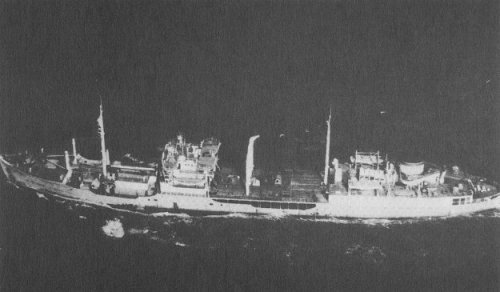- Joined
- 9 October 2009
- Messages
- 21,147
- Reaction score
- 12,249
At the same time as the Design 1047 battlecruiser project was being worked on, the Dutch need for dedicated naval tankers, especially to support operations around the Netherlands East Indies could no longer be ignored, so what was intended to be a eventual two-ship class was (belatedly) authorised by the Dutch Government. Unfortunately, like the 1047 and other programs & defense measures, it proved to be too little, too late:
Tankboot No.1
Design history [1]
Before the war, the fleet did not have a tanker dedicated to support naval operations at sea. This situation made the ships dependent on bases with fuel depots, and reduced operationally flexibility. The navy found a makeshift solution in chartering commercial tankers flying the Dutch flag, which were employed for short periods of time. The downside of this approach was that:
- The Navy had to plan far ahead to make sure sufficient tankers were available in the Netherlands East Indies. This required careful planning by the navy, and a flexible attitude with the shipping companies. As a rule, two to eight weeks passed between chartering a tanker and the ship becoming available for operations. One can imagine this arrangement did not work well in case of emergency.
- The tankers were not suited for fleet operations: they did not have the equipment needed to refuel the fleet at sea, they were unarmed and too slow to keep up with the warships at cruising speed.
- The use of tankers under charter was expensive in comparison to building and operating an own tanker.
The need for a tanker designed specifically for support of fleet operations was felt clearly whenever international tensions would rise and as a result, naval operations increased. Therefore, the Minister of Defence asked for funds under the 1939 Navy Budget to construct a naval tanker designed specifically to support naval operations. The Minister of Defence also informed parliament that there was in fact an operational need for two tankers, so he did not exclude the possibility that funds for the construction of a second tanker would be asked for in a following Navy Budget. The second tanker never materialized.
The ship authorized under the Navy Budget for 1939 was laid down in the Netherlands under the provisional name Tankboot No.1. The design had all the characteristics of an excellent fleet support ship: high speed, excellent armament and a large fuel capacity.[2] The German invasion of the Netherlands in May, 1940 prevented completion for the Royal Netherlands Navy. The German Kriegsmarine authorized the completion of the ship and commissioned her with the name Kärnten.
In the years between May 1940 (the fall of the Netherlands) and March, 1942 (the fall of the Netherlands East Indies), the Royal Netherlands Navy was forced to continue the practice using commercial tankers. The Navy came close to purchasing a commercial tanker in South America in 1940 or 1941, but the deal broke when the Navy found out the tanker had a relatively complicated (diesel-electric) propulsion plant.[3]
______________________________________________________________________________________________________________________________________
[1]: This information is taken from [MB39], pp. 123-160 unless otherwise noted.
[2]: More information on the arrangements for refueling while underway is much appreciated.
[3]: Information in this paragraph taken from [Boss], volume 2. More information on this deal is appreciated.
Attachments
Last edited:


